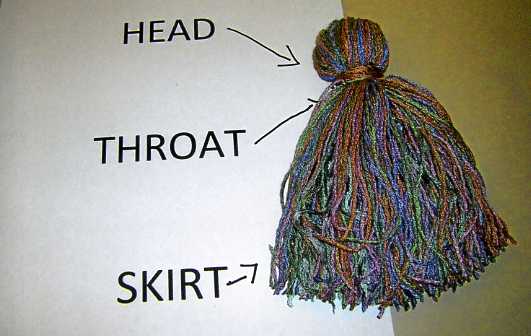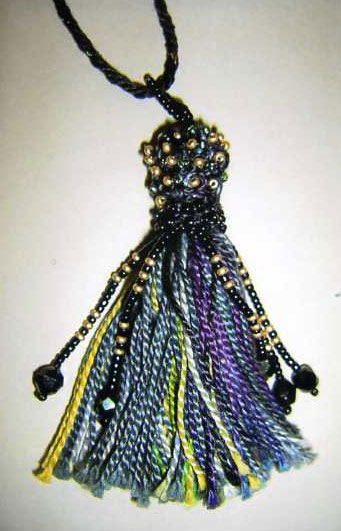Tassels are universal ornaments that are seen in many cultures and have been around for millennia. A Neolithic Cave painting suggests that tassels may have existed as early as 7000 BC. Egyptian tomb paintings dated to 1900 BC show a Phoenician prince draped in robes tied with tasseled cords. In the Middle East, Assyrian limestone relief panels reveal that warriors had tassels on bridles, saddle pads and chest plates. By the Byzantine era, tassels had become very elaborate, worn by people of wealth, made of gold threads and set with jewels.
The use of formal tassels, those that were made by artisans trained specifically in the arts of tassels and trims, may have originated in China, but as trade with Europe increased, the use of tassels quickly spread. In France, the art of tassel making evolved. During the seventeenth century, Louis XIV built his palace at Versailles. Exquisitely designed tassels became an essential feature on his furnishings.
The use of tassels continued, reflecting the politics of the time. They became simpler during the French revolution but regained a look of opulence during the reign of Louis Phillippe (1830-1848).
The Industrial Revolution changed the production of fabric from a cottage industry to power driven textile mills. Tassels were then produced by machine. However, the hand crafted tassel remained a symbol of affluence and style.
Today tassels are used on drapery tie-backs, on bags and purses, pillows, wall hangings and even on boots of majorettes in marching bands.
With such a long and illustrious pedigree, the thought of constructing a tassel may seem daunting, but– nothing could be simpler.
To make a sample tassel you will need: a piece of cardboard, a tapestry needle, yarn, scissors and a crochet hook.
Wrap the yarn around the cardboard until you have enough to make a nice pump bundle.
Slide another piece of yarn under all the yarn at one end of the cardboard and tie it tightly. This forms the top of the head on the tassel.

Tassel nomenclature
At the opposite end of the cardboard, use the scissors to cut through all the yarn.
Next, determine where you want the throat of the tassel to be and, with another piece of yarn, tie tightly and wrap several times before tying off.
The ends of the wrapping can be pulled into the skirt of the tassel with the crochet hook.
That’s it! You have made a simple tassel! Now the fun begins. It is time to embellish! Almost anything goes: beads, buttons, shells, found objects, sequins, bells, and – check out your local hardware store. It can be a treasure trove if you shop with an open mind. ( ie. When is a washer not a washer?)

The completed tassel
Those of us who weave on a loom will have no problem locating supplies for this project. It’s a great way to utilize all of our thrums. And for the basket makers, make a raffia tassel and hang it from a tree. Birds will discover it and use the raffia for their nests.
Conference is coming soon. Read what is being planned .